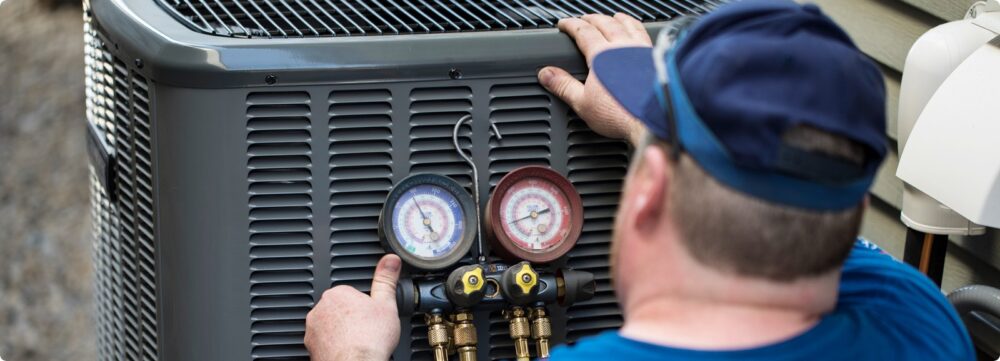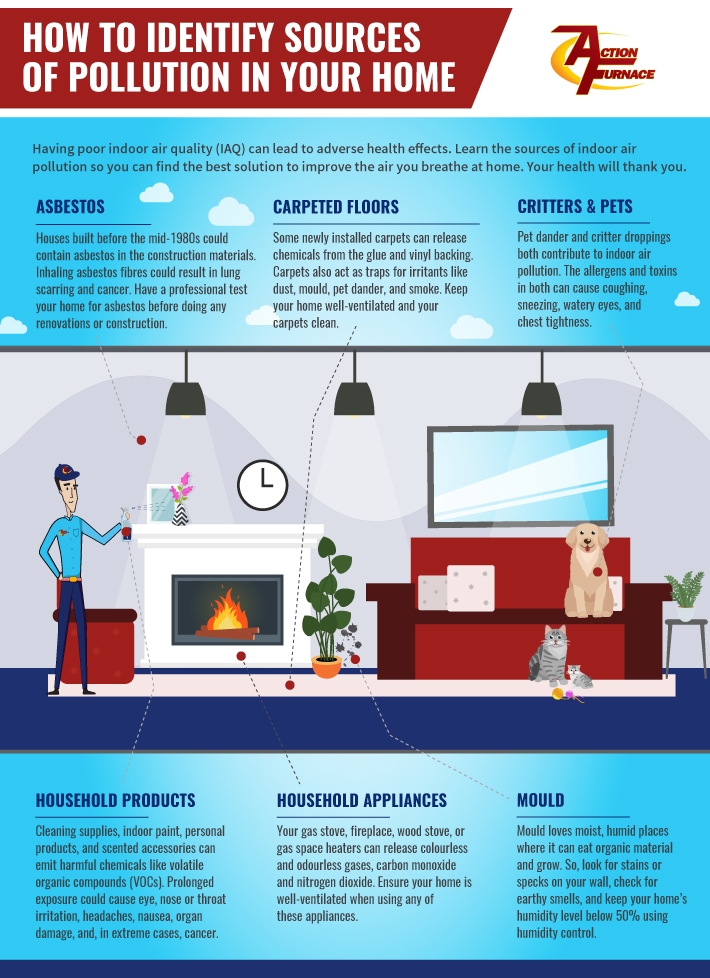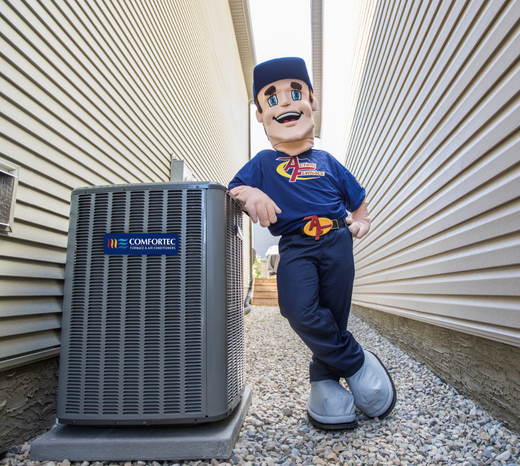Your home is your sanctuary—a space to relax, recharge, perhaps work on your hobbies—and the furthest thing from your mind may be indoor air pol...

Your home is your sanctuary—a space to relax, recharge, perhaps work on your hobbies—and the furthest thing from your mind may be indoor air pollution that could negatively impact your health.
Unfortunately, many airborne culprits can lead to health problems existing in your home. But, we can identify the sources to mitigate harm and prevent long-term health effects, either by noticing an unusual odour or having a professional assess your home’s air quality.
Let’s dive into some sources of indoor pollution and what you can do to improve the air you breathe at home.
What Is Indoor Air Pollution?
Thanks to the pandemic and its coinciding mask mandates, we're all familiar with airborne pollutants, but we’re not suggesting you wear a mask at home to protect yourself from lower indoor air quality (IAQ).
Shockingly, the air we breathe indoors can be 2 to 5 times more polluted than outside, according to the Environmental Protection Agency in the United States—and we tend to spend a lot more time indoors.
Simply speaking, indoor air pollution refers to the contamination in the air of an indoor environment, from sources including combustion materials, household products, and building materials. All of these sources take a toll on your IAQ and lead to adverse effects on your health.
Indoor Air Pollutants & Your Health
When your home is poorly ventilated, poorly constructed, or unmaintained, the risk of exposure to air pollutants increases. Additionally, increased use of synthetic building materials or household products means breathing your home’s air could harm to your health.
Occasionally, you’ll notice immediate effects after a single exposure or within a few instances. Short-term health effects include:
- headaches
- blocked sinuses or runny nose
- skin rashes
- itchy eyes
- drowsiness
- difficulty breathing
- dizziness
Sometimes, the health problems won’t appear for a while, and long-term issues could be more serious, including:
- respiratory problems
- cardiovascular issues
- cancer
For more susceptible individuals, symptoms may worsen preexisting conditions or be more debilitating. These individuals include young children, the elderly, anyone with respiratory problems like asthma or allergies, and people with weaker immune systems.

Sources That Create Pollution in Your Home
Several sources can lead to increased air pollution in your home. If you’re concerned about your indoor air quality, please contact the team at Action Furnace—we’ll be happy to help you track down air pollutants and improve your home’s air quality.
Asbestos
Asbestos is a mineral fibre found in rock and soil. It’s used in building materials such as cement and plaster, industrial furnaces and heating systems, building insulation, floor and ceiling tiles, and house siding. Homes in Alberta built before the mid-1980s may contain asbestos.
During home renovations or construction, exposure to asbestos can be hazardous to your health. When inhaled, asbestos can cause cancer and scarring in the lungs.
The good news is that if asbestos remains undisturbed, the harmful fibres do not become airborne and its presence in your home is less of an issue.
That said, you should still be aware of your home’s construction includes asbestos in case you plan on renovating or tearing down parts of your home, thereby releasing harmful asbestos fibres. Get a professional to test your home for asbestos before doing any construction or demolition work.
Carpeted Floors
Carpets may be cozy, especially during our Albertan winters, but they also collect all kinds of particles that can take a toll on your IAQ.
First, when carpets are installed, they can emit chemicals from the vinyl backing and the adhesive between the carpet and the floor. This emission is called off-gassing. It’s highly recommended that you have adequate ventilation, like a HEPA air filter, for a few days after installing a new carpet.
After your carpet has been in place for a while, it still plays a role in your home’s air. The carpet traps mould, particulates, and pet dander. Just walking across the carpet could release these harmful substances into your air.
When you start noticing side effects like headaches, dizziness, nausea, shortness of breath and asthma-like reactions, it may be time to look closely at your carpet.
So, what can you do? First, maintain a regular vacuuming routine and keep your home well-ventilated when your carpets are new (and, always, for that matter). And, if it’s an option for you, say goodbye to your carpets completely and consider bare floors with rugs.

Critters & Pets
Having pets undeniably brings so much joy into your home. But, with pets comes pet dander, which is an irritating allergen. Whether your pet is short-haired or long-haired, they shed microscopic skin flakes that can induce coughing, sneezing, watery eyes, and chest tightness.
The other critters in your home that you did not invite willingly include dust mites and rodents. These pests can leave toxic droppings that pose health risks, and they may also entice you to use pesticides, further decreasing your IAQ.
Often, these airborne pollutants can travel through your duct system and circulate throughout your home. A routine duct cleaning can be part of your solution to improving your indoor air quality.
Household Appliances
We’re not here to attack your toaster or washing machine. But, if you use a gas stove, a gas space heater, a wood stove, or a fireplace, listen up. These particular appliances can release severely harmful gases, namely carbon monoxide and nitrogen dioxide, and other harmful particles.
Carbon monoxide has no colour or smell, and it interferes with the delivery of oxygen throughout the body. Symptoms include:
- At lower concentrations: headaches, dizziness, weakness, nausea, confusion, disorientation, fatigue, chest pain
- At higher concentrations: unconsciousness, death
Likewise, nitrogen dioxide has no colour or smell. Symptoms of exposure to nitrogen dioxide include:
- Eye, nose, and throat irritation
- Shortness of breath
Particles from these combustion gases can be released into the air when the fuel doesn’t burn completely. As a results, they can find their way to your lungs if inhaled, potentially causing damage to the lung tissue.
To keep these harmful pollutants at bay, use a hood fan while cooking on a gas stove and ensure your home has adequate air filtration and ventilation. If you’re not sure, ask the pros for help—that’s why we’re here!
Household Products
We may not want to admit it, but sometimes, the cleaning solutions, personal hygiene products, and home decor we choose are not conducive to the best IAQ—but don’t beat yourself up because you may not even realize it.
The chemical ingredients often used in household products can emit volatile organic compounds (VOCs), generally found to cause eye, nose or throat irritation, headaches, nausea, organ damage, and cancer in extreme cases.
To ensure you’re choosing the safest products, read labels and avoid these harmful ingredients: benzene, formaldehyde, methylene chloride, phthalates, and VOCs. This list is non-exhaustive, but you can read more about dangerous chemicals used in household products.
Keeping your air quality at a safer level involves some small changes on your part but gives considerable benefits to your long-term health. Choose more natural cleaning products, avoid paint with VOCs, and adopt a lifestyle without chemically-laden scented candles or air fresheners.
When you’re cleaning, open the windows, wear gloves, and store your products safely.
Mould
Mould is a kind of fungus grown from spores that attach to damp areas indoors. With a food source and moisture, mould can grow on many surfaces. It tends to like humid climates and moisture from water leaks or condensation. During spring and fall, mould appears more as there’s more humidity and moisture in the air.
If your home has mould growth, you may notice symptoms from the mould such as:
- asthma flare-ups
- itchy, red, or irritated eyes, nose, and throat
- stuffy nose and blocked sinuses
- itchy skin or rashes
- respiratory problems
You can search for signs of mould on your own, then call in a professional to help you attack the problem. Start by looking for stains on the walls, ceilings, floors, or furniture, and water condensation or frost on the inside walls. Also, take a deep inhalation and notice any odd musty or earthy smells indoors.
One way to combat mould involves installing a total home humidifier. Keeping your humidity levels between 30 and 50% can prevent mould from growing too much and keep your IAQ in check.
Secondhand Smoke
This may be a no-brainer, but secondhand smoke remains a huge culprit in indoor air pollution. Maybe someone in your household smokes, or you live in an apartment with neighbours who smoke—either way, secondhand smoke is detrimental to your health.
Suppose you can't escape the cigarette smoke. In that case, we can help you as best we can with an air purification solution to reduce secondhand smoke (although the only way to prevent it entirely is by prohibiting smoking).
Improve Your Indoor Air Quality
We spend most of our time indoors, so why should we sacrifice our health to breathe suboptimal air? The eager team at Action Furnace can help you find a solution to improve your IAQ with air purification systems that integrate seamlessly with your HVAC unit, humidity control, and duct cleaning.
See also: How to Improve Your Indoor Air Quality
Beyond that, please get in touch with us to see how our solutions can benefit you and reduce the harmful airborne pollution in your home’s air.



